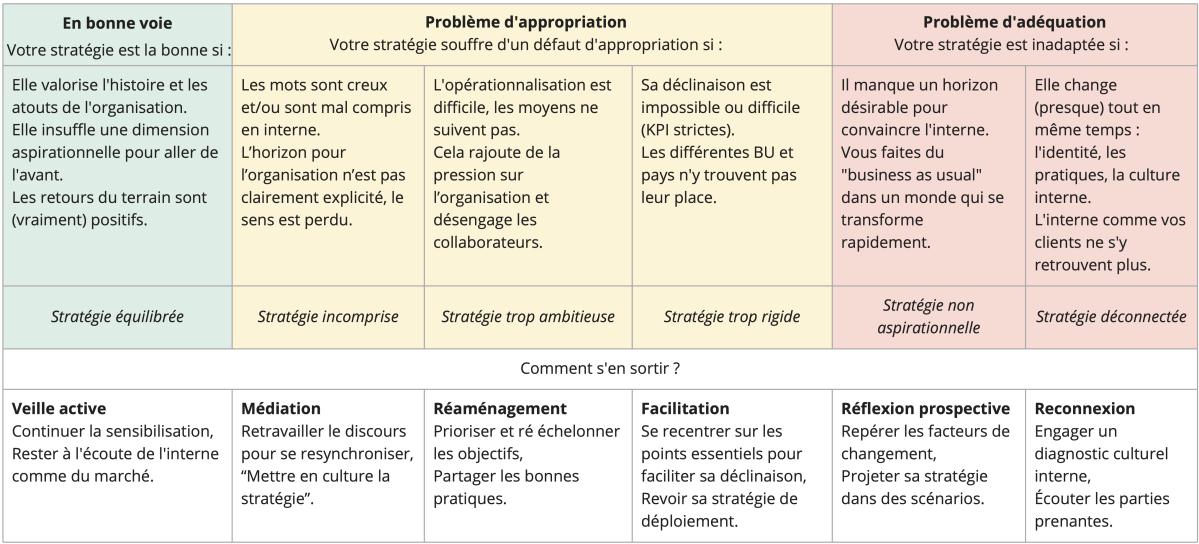As early as the 1980s, leading strategy consultants were already warning top executives about the gap between strategy formulation and execution. The famous mantra *"Culture eats strategy for breakfast,"* attributed to Peter Drucker, highlights the interdependence between culture and strategy.
An organization can initiate major strategic reforms and pivot in new directions, but for strategy to be successful, it must be grounded in the organization's culture. Strategies may come and go, but what Drucker truly emphasized is that *"culture is what endures over time."*
Strategy without culture is the downfall of the organization.
The reason this topic remains poorly understood is because culture is often seen as something elusive, rigid, and therefore unmanageable. Instead, a false assumption takes root in many leadership teams: “If the strategy gains buy-in, it will change the culture.”
The challenge is to dismantle this misconception, which is based on two assumptions. First, there is the belief that alignment with a strategy will lead to an immediate and widespread transformation of behaviors, attitudes, and collective habits within the organization. Secondly, there is the expectation that a strategy should naturally be engaging because it represents a promising future for the company. In other words: “If my strategy is compelling, the organization will follow.”
We have never observed culture obediently following a new strategic direction. On the contrary, we’ve identified four key factors that invalidate this reasoning:
- A strategy is not inherently engaging; it is often defined in relation to a market and requires an understanding of financial analysis codes. As organizations grow, these codes become less accessible at all levels.
- At the scale of an organization, strategy typically pertains to the short term (3 to 5 years), whereas organizational culture is rooted in the long term. We inherit culture when we join the organization and pass it on when we leave. It is essential to reconcile these two timelines.
- Culture consists of diverse populations, worlds, imaginations, and subcultures that a strategy cannot penetrate uniformly. Different groups will attempt to interpret and adopt the strategy, and if they fail to do so, it will ultimately have no impact.
- For a forward-thinking leader, the success of strategy adoption—and thus its genuine engagement—can be measured by both the changes and the continuity in how the strategy is communicated across these different populations. A good strategy, much like monotheistic religions, spreads through the alliances it forges with local beliefs rather than through the strictness of its original text.
The Strat-ego-Meter
While culture can hinder the implementation of a strategy, it can also serve as a powerful lever for success, especially when buy-in and ownership are aligned, and the strategy can be adapted to local contexts. Engagement arises from the alignment between the promise of the strategy, its meaning, recognition of the existing organizational identity, and the capacity to take action on it (local adaptation).
How can we adapt the strategy effectively without making mistakes?
- “Facet” your strategy. When drafting communication elements, identify which aspects will resonate with each population. For example: What does my strategy mean for the finance teams? What will be the implications for this site? To achieve nuanced results and avoid blind spots, Eranos constructs the strategic messaging based on qualitative interviews with each population.
- Cultivate your strategy. Your strategy will only resonate with your stakeholders if you create familiarity; this means cultivating a network of references known to your audience and establishing a shared expectation horizon in which stakeholders can find themselves. For instance, to generate enthusiasm, strategic messages often reference grand visions for “the future.” However, by failing to define this future (will it be shaped by the energy crisis? political turmoil? or a bright new dawn?), you do not create a drive toward a desirable future but rather foster a lack of vision regarding the direction.
- Engage in the deployment. Forming working groups that include different functions within the organization is a crucial step in strategic adaptation. The goal is to identify small, concrete actions that make sense for all business units, allowing them to embrace the strategy and become ambassadors for it. Eranos regularly facilitates steering committees to dissect and reshape the strategy alongside the various specific missions that comprise the organization’s overall mission (HR, Legal, Regulatory, Operational).

How can you tell if your strategy is the right one? Is it based on good financial results or customer satisfaction? Certainly, but under what conditions? Employee burnout and lack of authenticity can undermine success. A strategy’s validity for your organization depends equally on achieving your objectives and the conditions under which these objectives are realized. This is why it is essential to socialize the changes, to define both the end goals and the means to achieve them.





